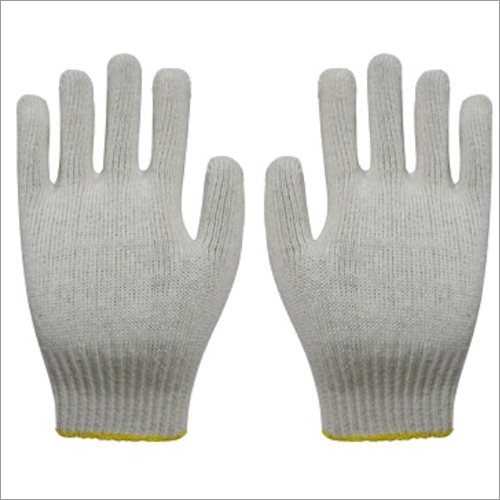How to Choose the Right Safety Gloves
It is important to know that choosing the Right or appropriate hand protection gloves for a specific situation and purpose is vital for work efficiency. Although this type of safety glove is not strong enough for dangerous jobs or jobs, it keeps the hand clean and is somewhat of a hand protection glove that protects the hand from abrasions. Cotton safety gloves are technically good to wear in cold weather as they provide warm support to the wearer's hands. Basically, cotton gloves are skin-friendly considering that they are made of cotton. It is a hand protection for general service work. Choosing the right safety gloves is essential to ensure your hands are adequately protected during various tasks.
Here's a step-by-step guide on how to choose the right safety gloves:
- Identify the Task
- Assess Hazards
- Material Selection
- Chemical Resistance
- Cut and Puncture Resistance
- Size and Fit
- Comfort and Dexterity
- Allergies and Sensitivities
- Durability
- Grip and Texture
- Cuff Length
- Regulations and Standards
- Trial and Feedback
- Cost Consideration
- Maintenance and Care
What is the advantage of a cotton glove?
Types of Gloves To Protect Your Hands
- Disposable Gloves: These gloves are often made from latex, nitrile, or vinyl materials. They are commonly used in medical settings, laboratories, and food handling to prevent cross-contamination and protect against minor chemical exposure.
- Nitrile Gloves: Nitrile gloves are resistant to chemicals, oils, and punctures, making them suitable for medical use, mechanics, and working with hazardous materials.
- Latex Gloves: Latex gloves provide a snug fit and are commonly used in medical and laboratory settings. However, some people are allergic to latex, so alternatives like nitrile or vinyl may be preferred.
- Vinyl Gloves: Vinyl gloves are a cost-effective option for tasks that don't involve heavy chemicals or puncture risks. They are often used in food service, cleaning, and light industrial work.
- Cut-Resistant Gloves: These gloves are designed to protect against cuts and abrasions, often used in industries like construction, manufacturing, and food processing.
- Heat-Resistant Gloves: These gloves are made to withstand high temperatures and are used in industries such as welding, metalworking, and cooking.
- Chemical-Resistant Gloves: These gloves are specifically designed to provide protection against various chemicals and hazardous substances. They are used in laboratories, chemical handling, and manufacturing.
- Electrical Gloves: Electrical gloves are insulated to protect against electrical shocks and are commonly used by electricians when working with live electrical components.
- Cold-Weather Gloves: Insulated gloves designed to keep hands warm in cold environments, often used in outdoor activities, winter sports, and cold-storage facilities.
- Disposable Polyethylene Gloves: These lightweight gloves are used in food handling and light cleaning tasks where a barrier is needed but a higher level of protection isn't required.
- Welding Gloves: Welding gloves are heavy-duty gloves designed to protect against sparks, heat, and UV radiation during welding and metalworking tasks.
- Gardening Gloves: These gloves provide protection while gardening, preventing cuts, blisters, and exposure to dirt and chemicals.
- Mechanic's Gloves: Mechanic's gloves offer protection from grease, oil, and abrasions, making them suitable for automotive and mechanical work.
- Medical Examination Gloves: These gloves are used by healthcare professionals during patient examinations to reduce the risk of contamination and infection.
- Disposable Gloves with Extended Cuffs: These gloves have longer cuffs to provide additional protection to the wrists and forearms, often used in situations where you need to avoid contact with hazardous substances.







